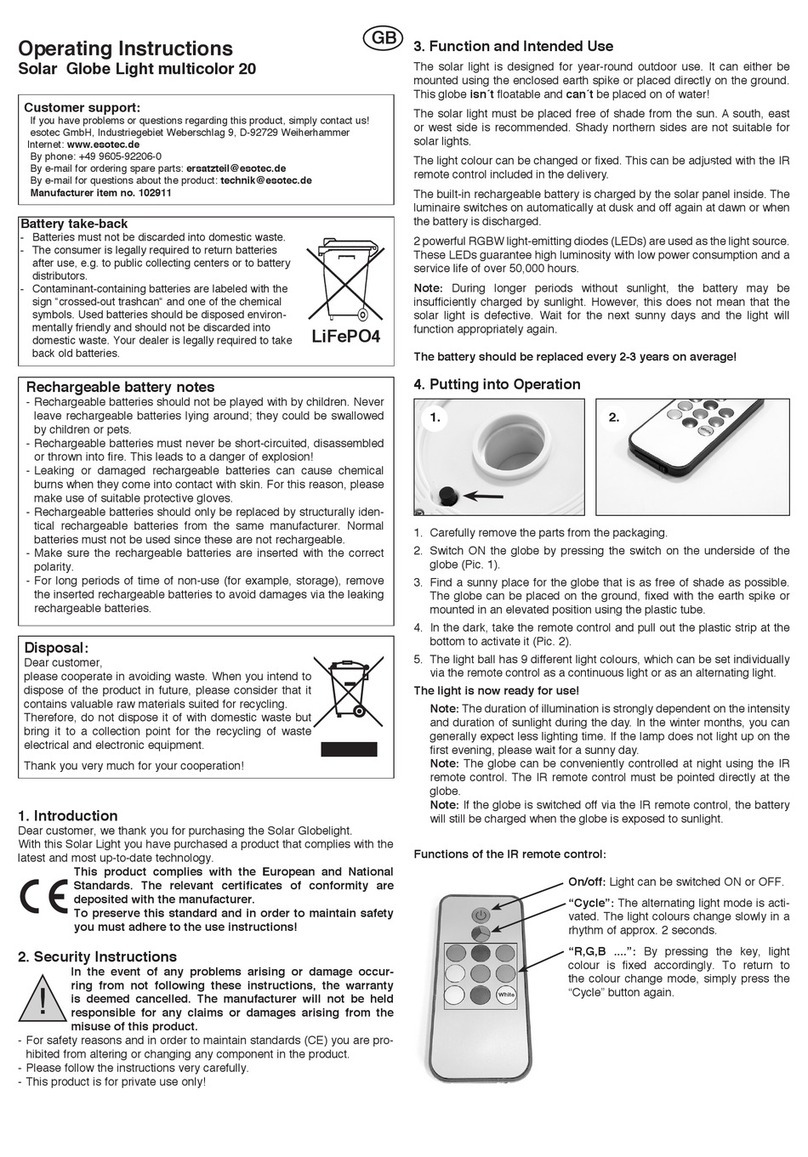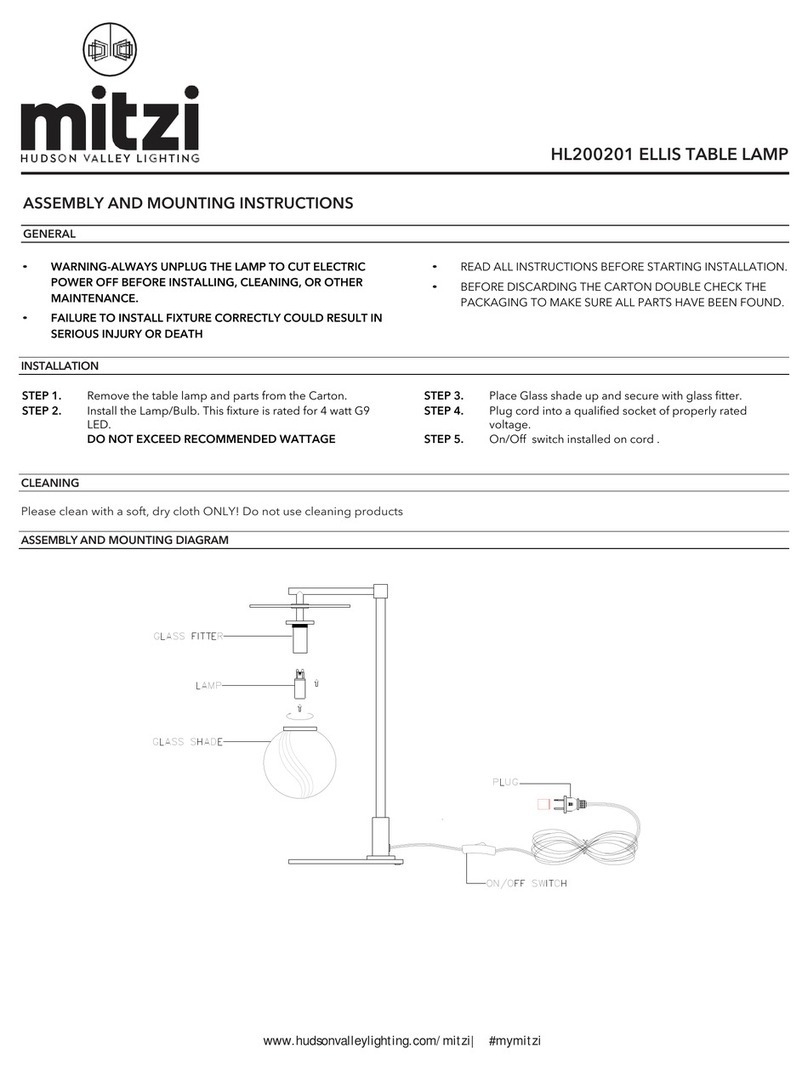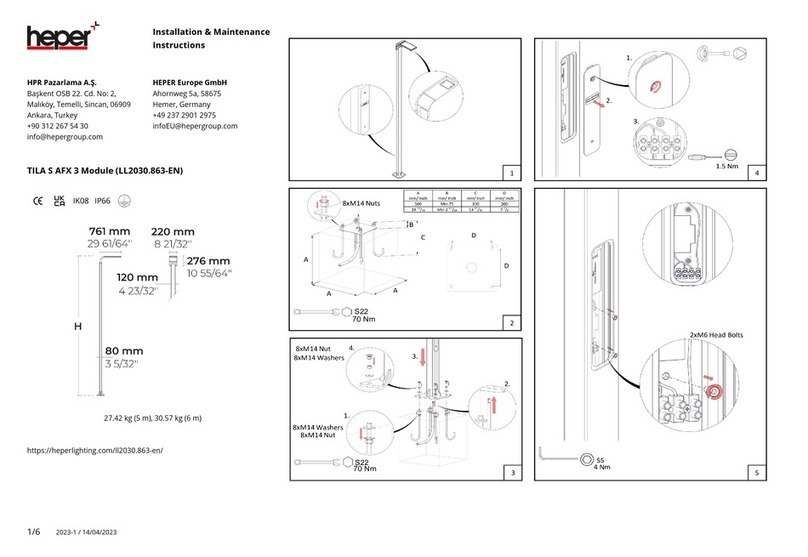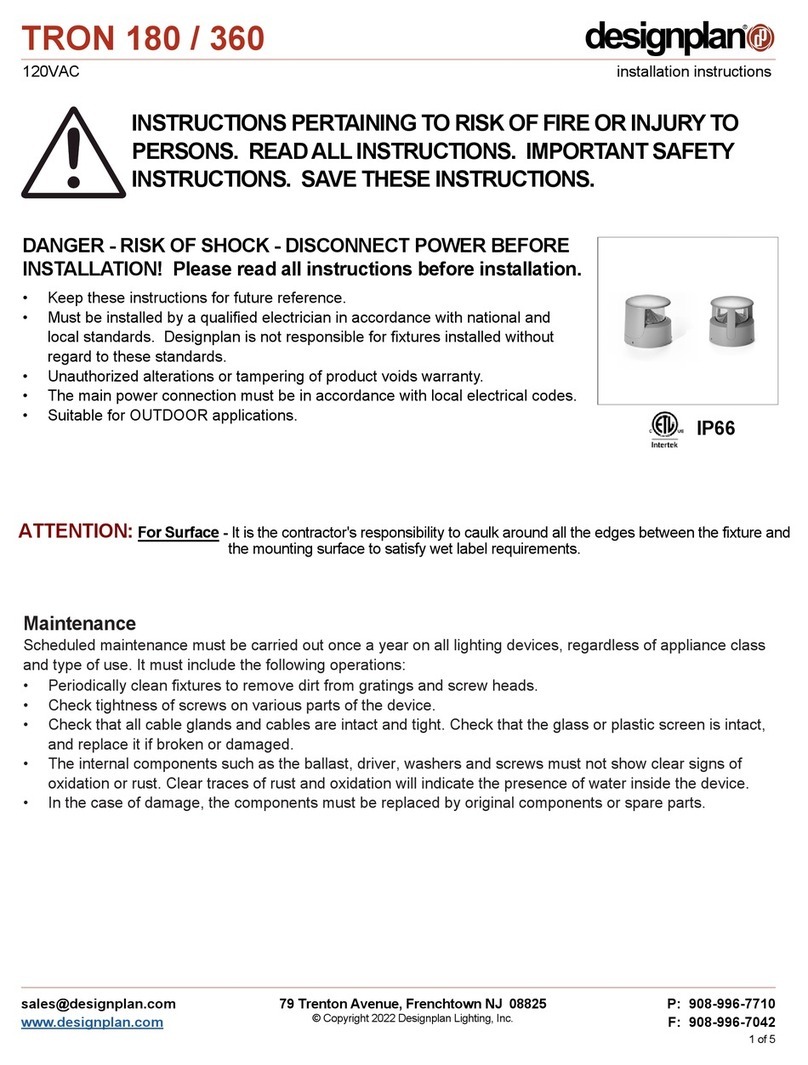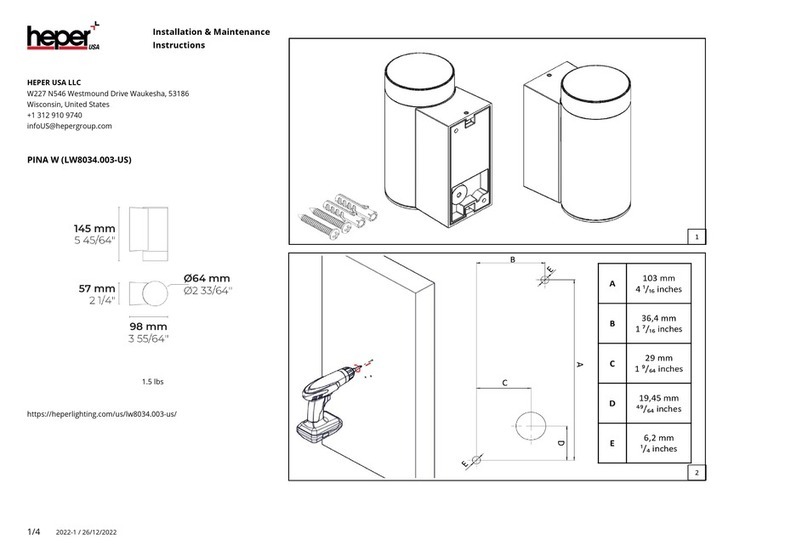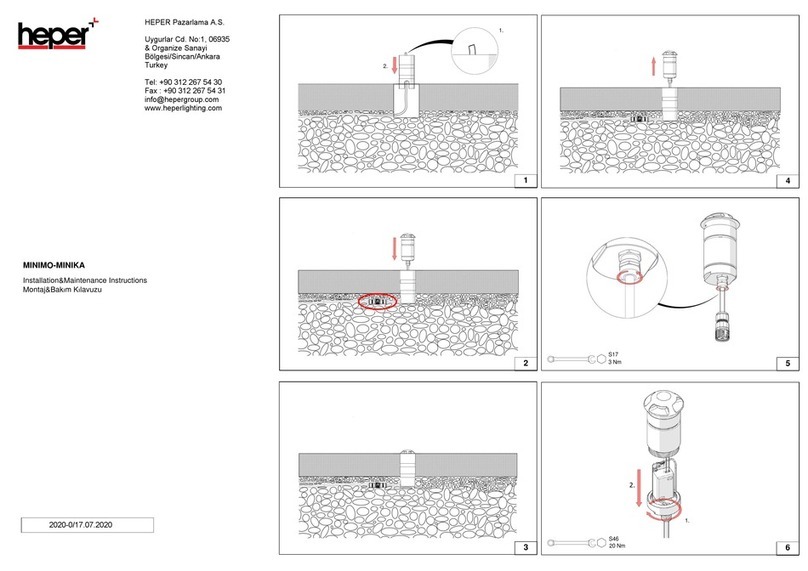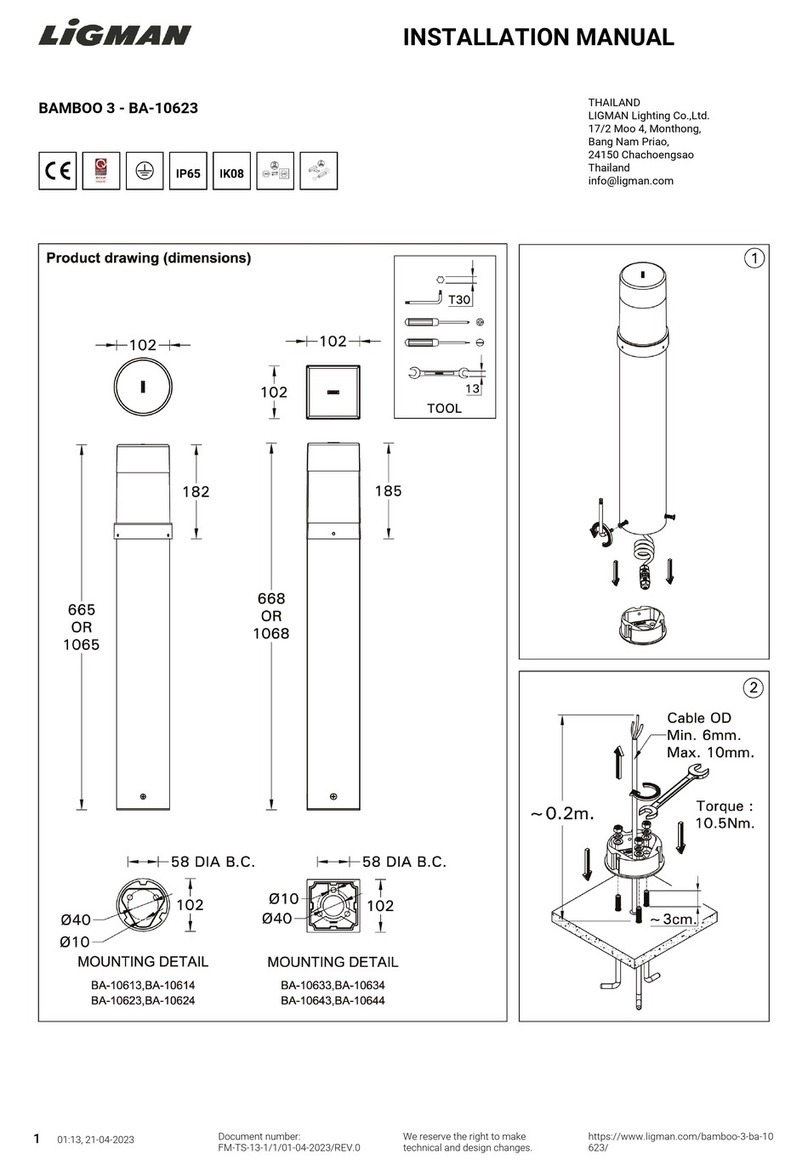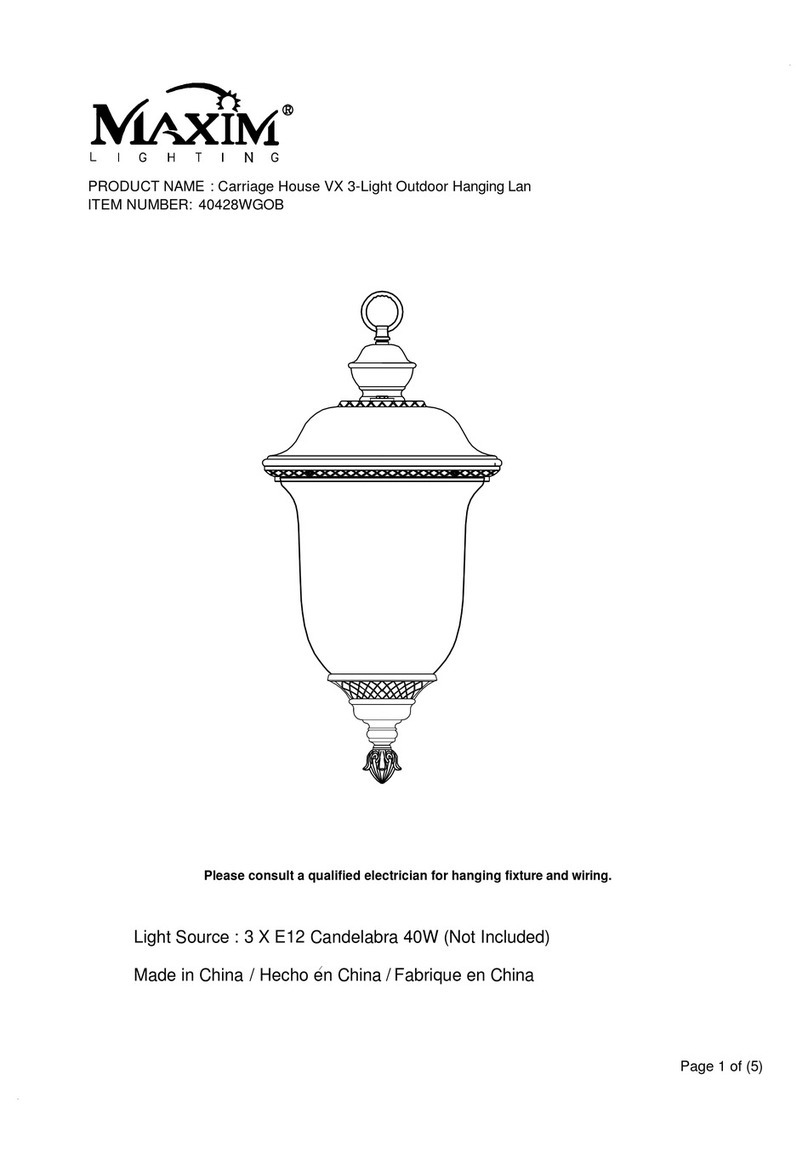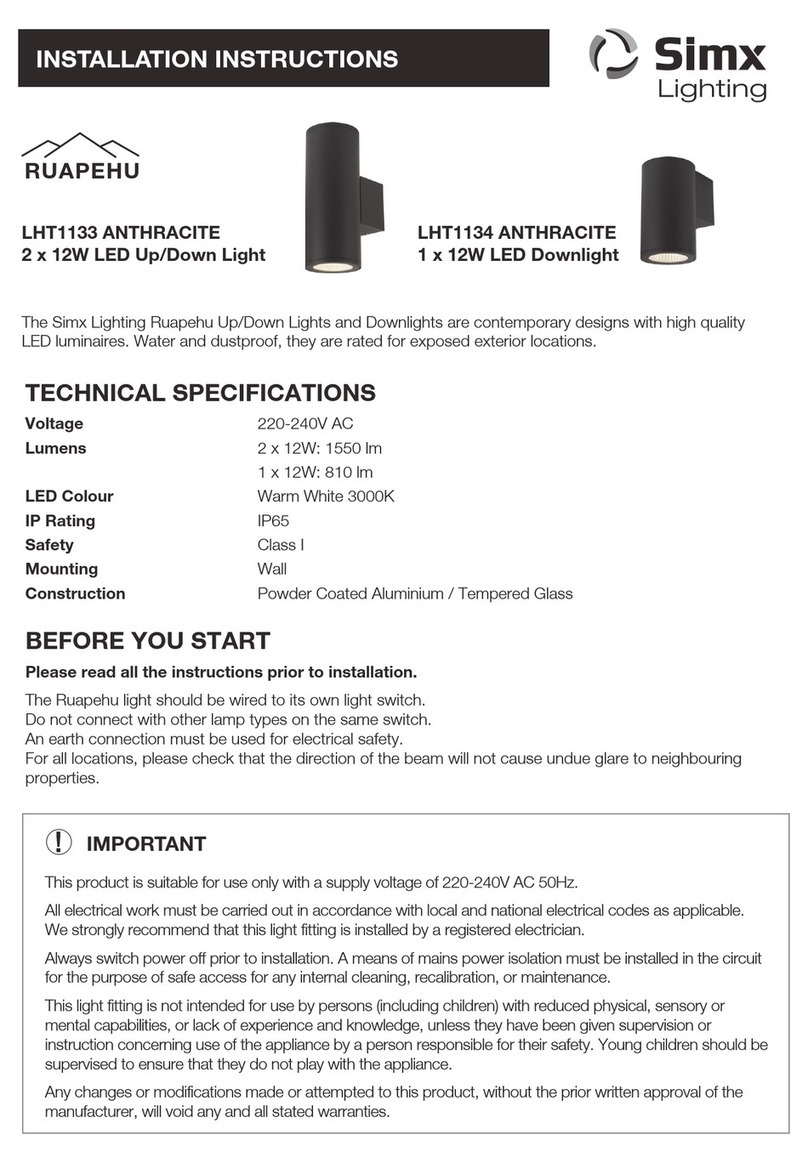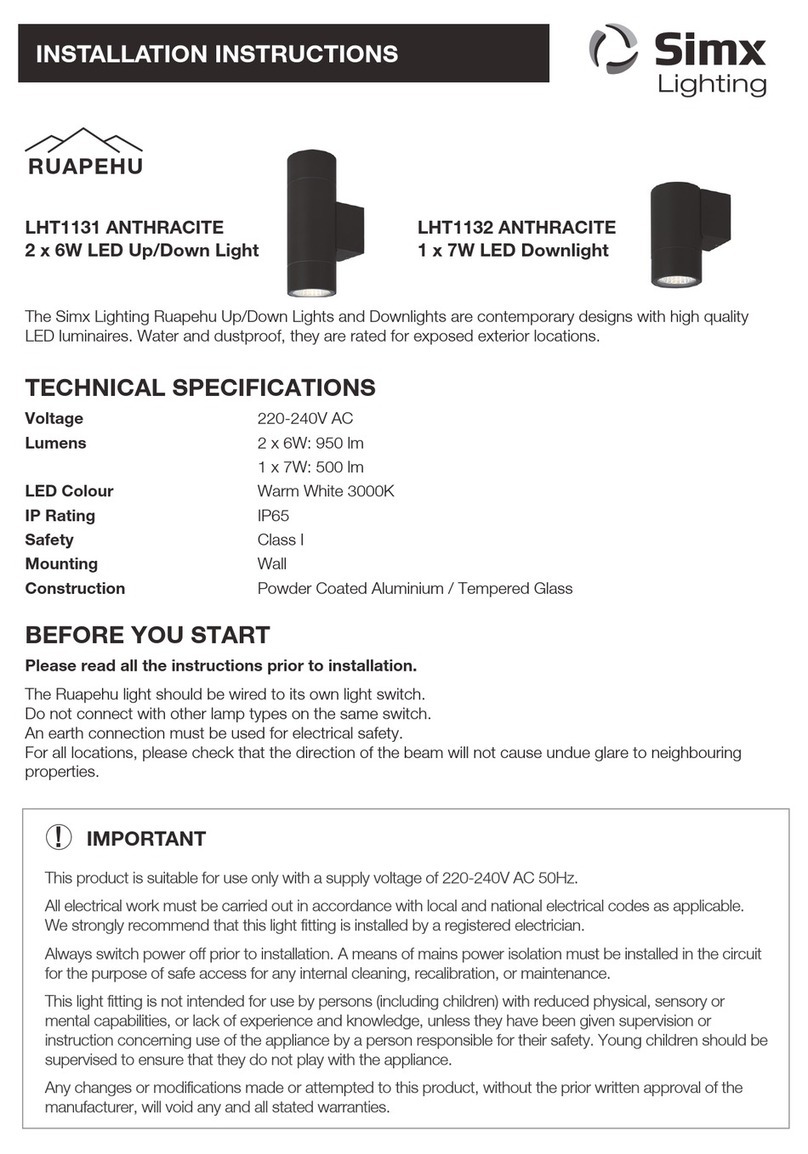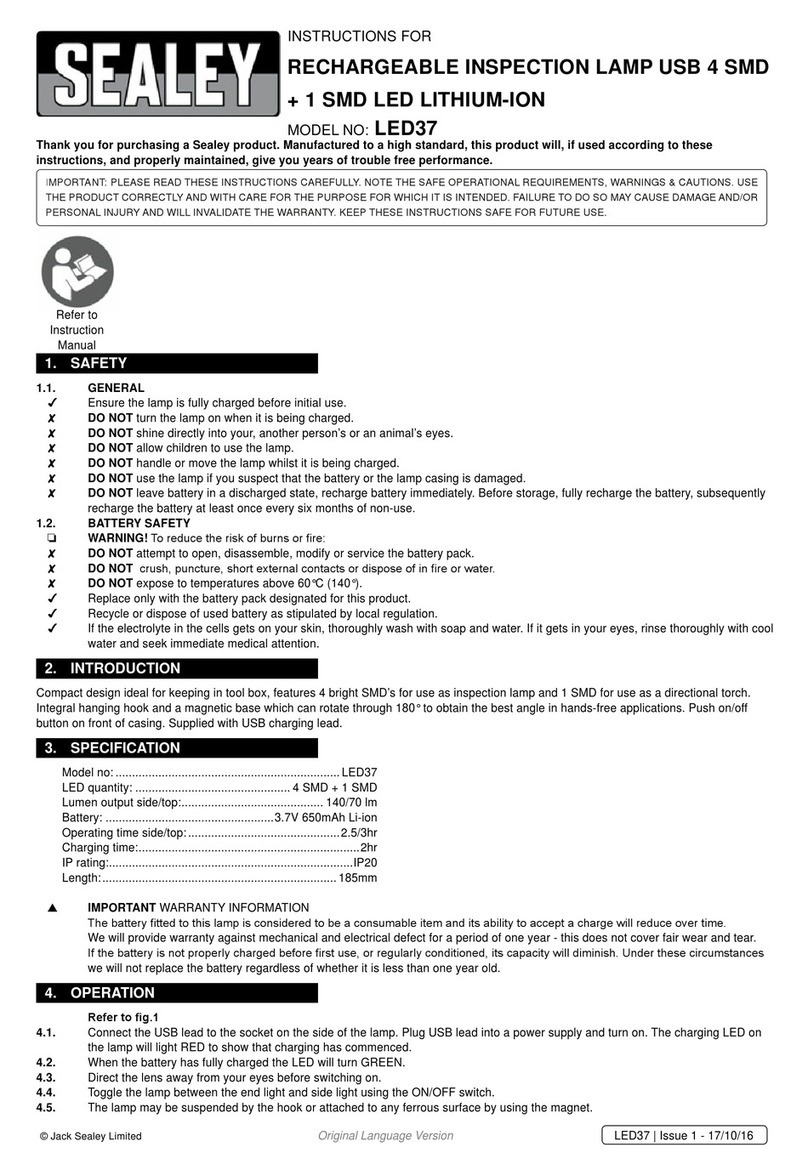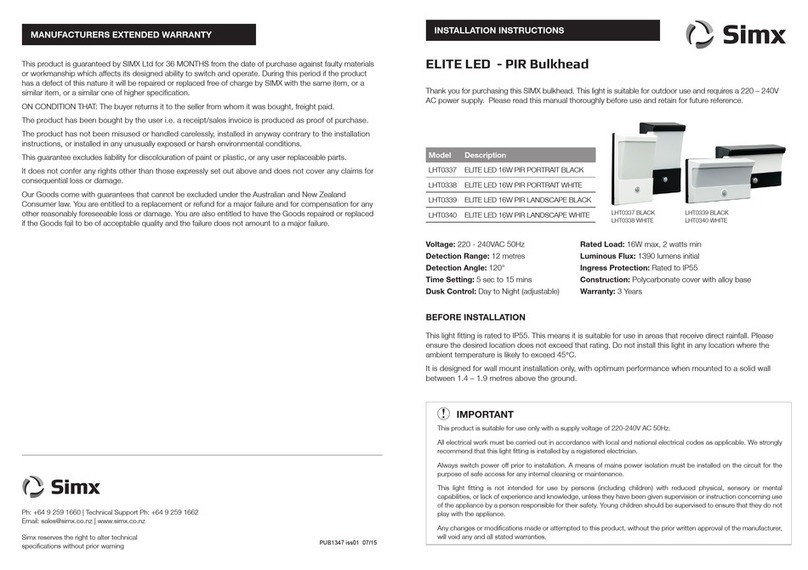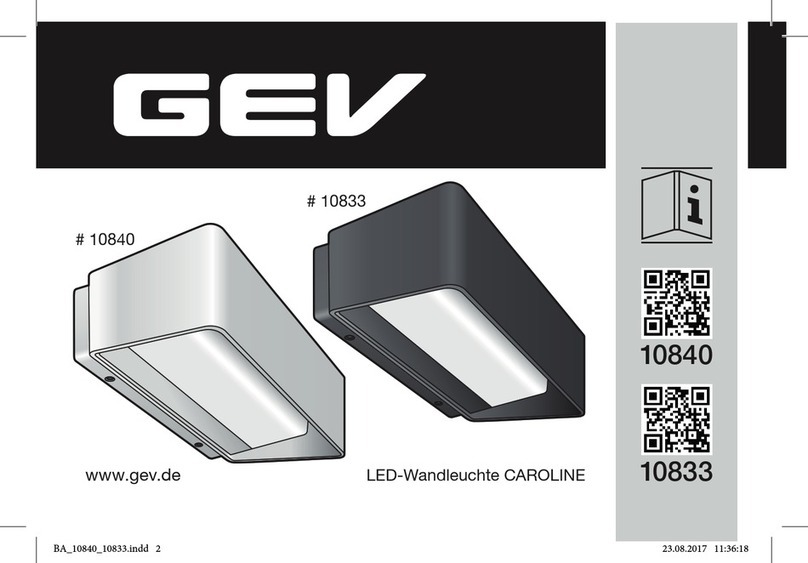
Minimum On Time Setting
Maximum LUX Setting
Fig. 4 Fig. 5
OPERATION AND TESTING
WALK TESTING PROCEDURE
Adjust the sensor to point in the desired direction. Set the adjustment controls underside of the unit to the
following to enable daytime operation for walk testing: TIME - Fully anti-clockwise DUSK - Fully clockwise.
The lamp will switch on for a "warm-up" period for 1 minute. Remain outside the detection area during the
warm-up period. Walk across the detection area approx 5 metres from the unit. As you cross a detection
"zone" the lamp will illuminate. Stand still until the lamp extinguishes (approx. 2 secs) then start moving
again. As you cross each "zone" the lamp will illuminate.
Repeat the above, walking at various distances and angles to the unit. This will help you to establish the
detection pattern. If the detection area is too small for your requirements, angle the sensor head up to
increase the coverage distance. Angling the head downwards will reduce the range should a smaller
coverage area be required.
SETTING UP FOR AUTOMATIC OPERATION (Fig. 4)
The TIME setting (Clock) controls how long the unit remains illuminated following activation & after all
motion ceases. The minimum time (fully anti-clockwise) is approx. 2 seconds, whilst the maximum time
(fully clockwise) is approx. 6 minutes. Set the control to the desired setting between these limits.
The LUX setting (sun and moon) controls the level of darkness required for the unit to start operating. To
operate the sensor earlier, adjust the dusk control anti-clockwise. To operate the sensor later, adjust the
dusk control clockwise. Wait for at least 1 minute between adjustments.
An easy way to set the sensor to your desired activation time is to set the dusk control fully anti-clockwise
to start operating automatically at dusk, this is the earliest it will operate. Then wait until the ambient light
level reaches the level of darkness at which you wish the lamp to become operative, The unit may trigger
when the dusk control is adjusted, it will settle into normal sensing mode after 1 minute of inactivity.
SLOWLY rotate the control in a clockwise direction until a point is reached where the lamp illuminates.
Leave the control set at this point.
MASKING THE SENSOR LENS
To restrict the sensor coverage, preventing detection in unwanted areas, mask the sensor lens using the
masks (included in kit). (Fig. 5) Removing the largest centre segment provides a 40° detection area, while
removing all segments provides maximum 140° angle. The mask clips into place.
Remove one segment at a time, aim, and check in walk test mode. Continue removing segments until
correct coverage is achieved. The purpose of the lens mask is to block out areas not desired for detection.
Apply to PIR lens as required for your location.






